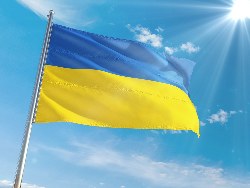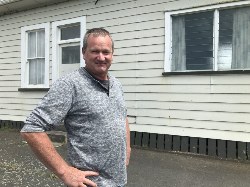Apollo 11 Touches Down - 30 Years Past
researched by Selwyn Manning -
Thirty years ago today New Zealanders gazed upward and wondered what it would be like to be Neil Armstrong and Buzz Aldrin. Here in Auckland we heard the song of the time on One ZB play “Apollo touches down...” In the classrooms teachers called students to attention, “Hands on Heads” they said. The Eagle had landed.
Five hours later we saw it on television. Here in Auckland AKTV2 played the scratchy footage which was flown over from Sydney and speed from Auckland International Airport “in a fast car” to the television studios.
The next day the New Zealand Herald and the Auckland Star displayed impressive frontpage coverage of the Apollo 11 mission landing on the moon. And a grandfather in a small south Auckland village called Takanini said: “Well, now I’ve seen everything from horse and cart, to motorcars, to aeroplanes, and now the bastards are walking on the moon.”
Apollo 11’s voyage began at 2:32 a.m. New Zealand time, July 17, when a Saturn V rocket launched it into Earth orbit from Cape Kennedy. After one and a half orbits of the Earth, the third stage of the Saturn V refired to send Apollo on its outward journey to the Moon. Shortly afterward, the command/service module, called Columbia, separated from the Saturn third stage, turned around, and connected nose to nose with the lunar module, called Eagle, which had been stored in the third stage. With Eagle attached to its nose, Columbia drew away from the third stage and continued toward the Moon.
On July 20, Apollo 11 neared and went behind the Moon. At 5:28 a.m. New Zealand time, it fired its service module rocket to go into lunar orbit. After 24 hours in lunar orbit Armstrong and Aldrin separated Eagle from Columbia, to prepare for descent to the lunar surface. On July 21 at 9:18 a.m. New Zealand time, the Lunar Module touched down on the Moon at Tranquility Base. Armstrong reported "The Eagle Has Landed." And at 3:56 p.m., Armstrong, descending from Eagle's ladder and touching one foot to the Moon's surface, announced: "That's one small step for a man, one giant leap for mankind."
Aldrin soon joined Armstrong. Before a live television camera which they set up on the surface, they performed their assigned tasks. Man's first dramatic venture on the lunar surface ended at 6:54 a.m., July 22 NZ Time when Armstrong and Aldrin lifted off from the Moon on a tower of flame. They rejoined Eagle to Columbia, in which Collins had waited for them, in lunar orbit. They returned to Columbia and cast Eagle adrift.
The astronauts then fired their service module rocket to break from the Moon's gravitational grip and head for home. They reached Earth's vicinity at a speed of about 25,000 mph, threaded their way into its atmosphere to avoid burning up or bouncing back into space, and finally with parachutes billowing landed in the Pacific Ocean southwest of Hawaii at 5:51 a.m. July 25.
Here, courtesy of NASA is the account by Neil Armstrong, back on Earth, speaking to a press conference, on his experience approaching and then walking on the moon.
“The crater Maskelyne W appeared approximately two to three seconds later and gave us the clue that we would probably land somewhat long.
“After completing those position checks we rolled over face up so that the landing radar could lock on the ground and confirm our actual altitude. Now, at this phase in the trajectory we were pointed directly at the planet Earth. In the final phases of descent after a number of program alarms, we looked at the landing area and found a very large crater. (Photo 8.) The camera is located in the right window and looks to the right and it just barely sees the boulder field that we are passing over. We are at 400 feet and the boulders are about 10 feet across. This is the area which we decided we would not go into; we extended the range downrange and saw this crater which we passed over -- this 80-foot crater-- in the final phases of descent and later took some pictures of it. The exhaust dust was kicked up by the engine (Photo 9) and this caused some concern in that it degraded our ability to determine not only our altitude and altitude-grade in the final phases, but also, and probably more importantly, our translational velocities over the ground. It's quite important not to stub your toe during the final phases of touchdown. Once settled on the surface, the dust settled immediately and we had an excellent view of the area surrounding the LM. We saw a crater surface, pock-marked with craters up to 15, 20, 30 feet and many smaller craters down to a diameter of 1 foot and, of course, the surface was very fine-grained, (Photo 10.) We could tell that from our view out the window, but there were a surprising number of rocks of all sizes.
“A number of experts had, prior to
the flight, predicted that a good bit of difficulty might be
encountered by people attempting to work on the surface of
the Moon due to the variety of strange atmospheric and
gravitational characteristics that would be encountered.
This didn't prove to be the case and after landing we felt
very comfortable in the lunar gravity. It was, in fact, in
our view preferable both to weightlessness and to the
Earth's gravity.
“When we actually descended the ladder it was found to be very much like the lunar gravity simulations we had performed here on Earth. No difficulty was encountered in descending the ladder. The last step was about 3 1/2 feet trom the surface, and we were somewhat concerned that we might have difficulty in reentering the LM at the end of our activity period.
“So we practiced that before doing the exercise of bringing the camera down which took the subsequent surface pictures. Here you see the camera being lowered on what might be called the "Brooklyn clothesline." I was operating quite carefully here because immediately to my right and off the picture was a six-foot-deep crater. And I was somewhat concerned about losing my balance on the steep slope. The other item of interest in the very early stages of EVA, should it have been cut short for some unknown reason, was the job of bringing back a sample of the lunar rocks. The photograph shows the collection of that initial sample into a small bag and then that bag being deposited in my pocket. This was the first of a number of times when we found two men were a great help. I quickly put up the TV camera. And then more leisurely Buzz and I joined together to erect the American flag. We found on a number of occasions when we were able to help each other in many ways on the surface. You probably recall the times that I got my foot caught in the television cable, and Buzz was able to help me extract it without falling down.”
The Man on Moon mission was definitely a
moment of achievement for mankind - a bright break away from
the assassinations and war which had plagued the 1960s. And
it was a moment of pride here that we, a country closely
alligned to the United States, somehow joyed too in the
marvells of technology which has made it possible for us to
break free of the earth and to discover lands far
away.


 Gordon Campbell: On Iran Killing Its Rappers, And Searching For The Invisible Dr. Reti
Gordon Campbell: On Iran Killing Its Rappers, And Searching For The Invisible Dr. Reti Labour Party: National Should Heed Tribunal Warning And Scrap Coalition Commitment With ACT
Labour Party: National Should Heed Tribunal Warning And Scrap Coalition Commitment With ACT Government: Saves Access To Medicines
Government: Saves Access To Medicines Office of the Speaker: Law And Order, Finance, And Defence A Focus For Ukrainian Parliamentary Delegation To NZ
Office of the Speaker: Law And Order, Finance, And Defence A Focus For Ukrainian Parliamentary Delegation To NZ Environmental Defence Society: Fast-track Approvals Bill Presents A Serious Risk To New Zealand Exporters
Environmental Defence Society: Fast-track Approvals Bill Presents A Serious Risk To New Zealand Exporters NZ Government: New Lab To Help Protect Key Pacific Tuna Fisheries
NZ Government: New Lab To Help Protect Key Pacific Tuna Fisheries Susan Botting - Local Democracy Reporter: Ruawai Leader Slams Kaipara Council In Battle Over $400k Property
Susan Botting - Local Democracy Reporter: Ruawai Leader Slams Kaipara Council In Battle Over $400k Property


